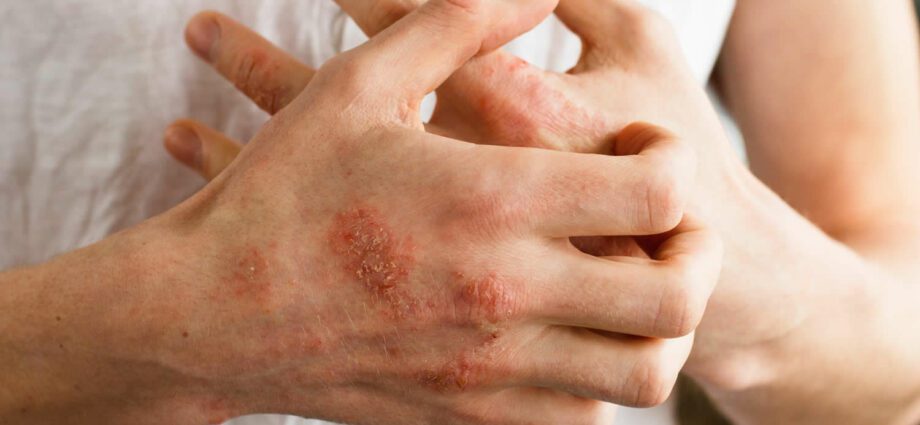Contents
Latex allergy: symptoms and treatments
Latex allergy: symptoms and treatments
Found in many everyday products and in medical equipment, latex is a substance that can cause allergies. What are the symptoms of latex allergy? Who are the people most at risk? Can we treat it? Answers with Dr Ruth Navarro, allergist.
What is latex?
Latex is a substance that comes from a tree, the rubber tree. It occurs as a milky liquid under the bark of the tree. Grown mainly in tropical countries (Malaysia, Thailand, India), it is used to manufacture more than 40 products well known to the general public, including the most common: medical gloves, condoms, chewing gum, inflatable balloons, elastic bands and suspenders. clothes (bra for example) and bottle nipples.
What is latex allergy?
We talk about latex allergy when a person who comes into contact with the substance for the first time develops an abnormal immune reaction which will lead to an allergic reaction to the second contact with the latex. The allergic reaction and the symptoms that accompany it are linked to the production of immunoglobulins E (IgE), antibodies directed against the proteins in the latex.
Who is concerned ?
Between 1 and 6,4% of the general population is allergic to latex. All age groups are affected, but we notice that some people are more at risk than others of developing this type of allergy. “People who have undergone several surgeries at a very young age, in particular interventions on spina bifida or on the urinary tract, but also health professionals who often use latex gloves are populations more likely to suffer from a latex allergy. ”, Points out Dr Navarro. The proportion of people allergic to latex is also higher in atopic patients.
Symptoms of latex allergy
Symptoms are different depending on the type of allergen exposure. “The allergy does not manifest itself in the same way if the contact with the latex is cutaneous and respiratory or if it is blood. Contact with blood occurs when a health professional intervenes inside the abdomen with latex gloves during an operation for example ”, specifies the allergist.
Local reactions
Thus, a distinction is made between local reactions and systemic reactions. In the local reactions, we find the cutaneous signs:
- contact eczema by irritation;
- redness of the skin;
- local edema;
- itches.
“All of these symptoms are characteristic of a delayed latex allergy, that is, one that occurs a few minutes or hours after coming into contact with the allergen,” says Dr Navarro.
Respiratory and eye symptoms
Latex allergy can also cause respiratory and eye symptoms when the allergic person breathes in the particles released into the air by the latex:
- breathing difficulties;
- cough;
- shortness of breath;
- tingling in the eyes;
- weeping eyes;
- sneezing;
- runny nose.
The most serious reactions
Systemic reactions, potentially more serious, affect the whole body and appear quickly after contact of the latex with the blood (during an operation). They result in swelling of the mucous membranes and / or anaphylactic shock, a medical emergency that can lead to death if there is no prompt treatment.
Treatments for latex allergy
The treatment for this type of allergy is the eviction of latex. To date, there is no specific treatment for latex desensitization. The treatments offered can only relieve the symptoms when the allergy occurs. “To relieve skin symptoms, a cortisone-based ointment can be offered,” says the specialist. Antihistamine drugs are also prescribed to alleviate moderate local skin, respiratory and eye reactions.
Treatment for severe reaction
In the event of a severe reaction such as anaphylactic shock, treatment is based on an intramuscular injection of adrenaline. If you are dealing with a person who has difficulty breathing, swelling of the face, loss of consciousness and hives all over the body, place them in the Safety Side Position (PLS) and then immediately call 15 or 112. On their arrival, the emergency services will inject adrenaline. Note that patients who have already had an episode of anaphylactic shock should always carry an emergency kit containing an antihistamine and an auto-injectable epinephrine pen if this ever happens again.
Practical advice in case of latex allergy
If you are allergic to latex:
- always report it to the healthcare professionals you consult;
- always carry a card with you mentioning your latex allergy to inform emergency responders in the event of an accident;
- avoid contact with latex objects (latex gloves, latex condoms, balloons, swimming goggles, rubber bathing caps, etc.). “Fortunately, there are alternatives to latex for certain objects. There are vinyl condoms and hypoallergenic vinyl or neoprene gloves.
Beware of latex-food cross allergies!
Latex contains proteins that are also found in foods and this can lead to cross-allergies. A person allergic to latex can therefore also be allergic to avocado, banana, kiwi or even chestnut.
This is why in case of suspicion of allergy to latex in a patient, the allergist can check during the diagnosis if there are no allergies crossed with the fruits mentioned above. The diagnosis begins with a questioning of the patient to know the conditions of onset of symptoms, the various symptoms of the suspected allergy and the extent of exposure to the allergen in question. The allergist then performs skin tests (prick tests): he deposits a small amount of latex on the skin of the forearm and sees if it reacts abnormally (redness, itching, etc.). Blood tests may also be ordered to make a diagnosis of latex allergy.











አመሰግናለሁ